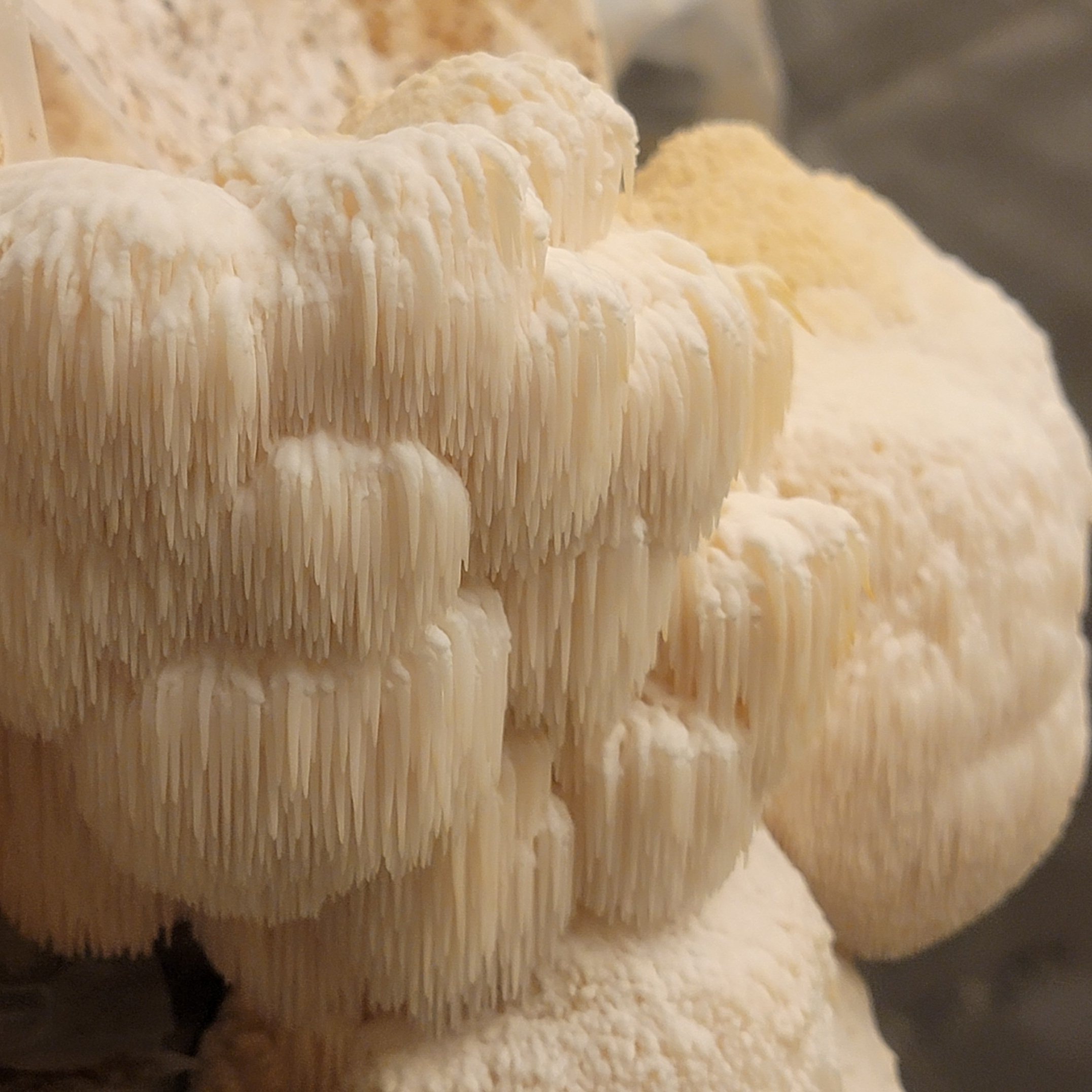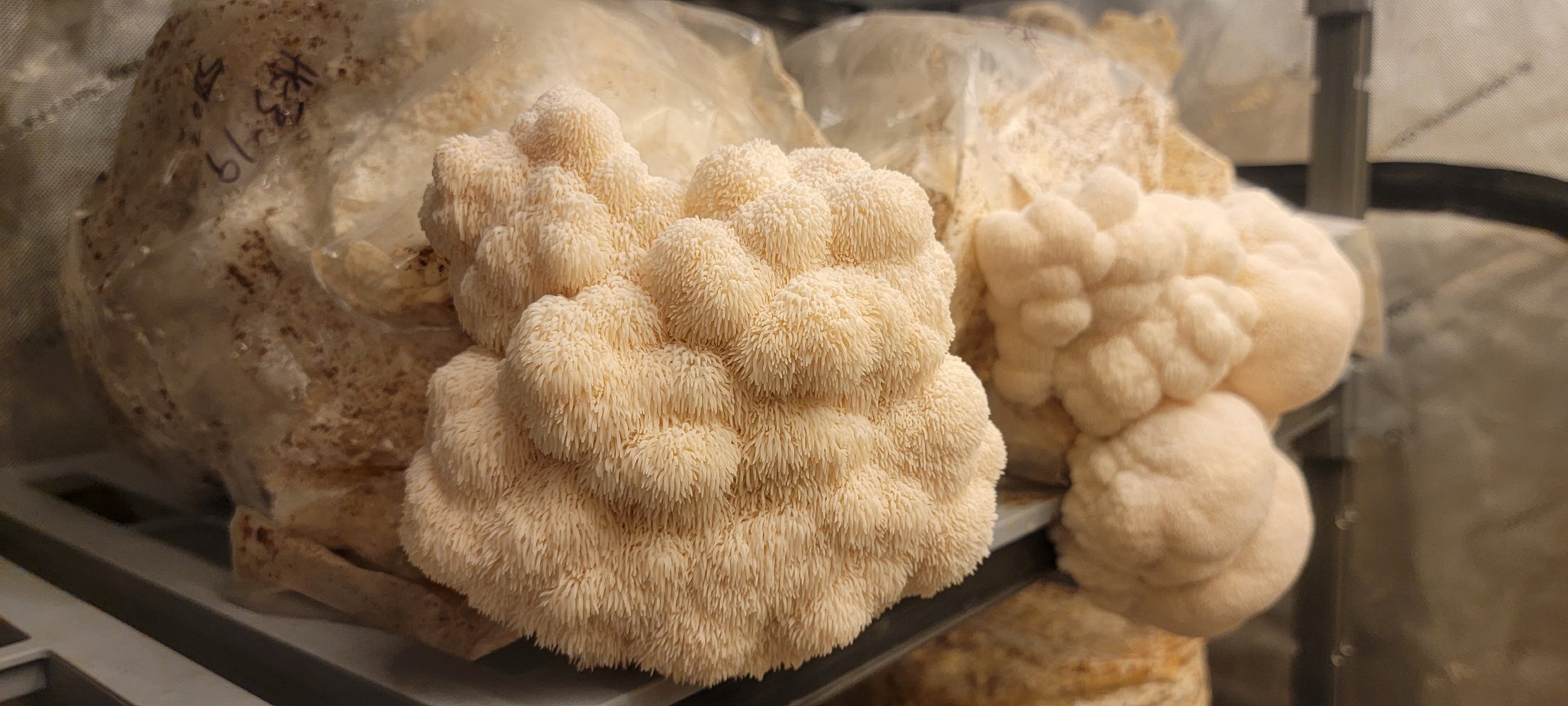Lion’s Mane
-
· Temperature: Ideal growing temperatures are usually between 60-75°F (13-24°C).
· Humidity: High humidity is essential, typically around 85-95% for optimal growth. Spray the mushrooms 2-3 times daily when initially opened, decreasing frequency as the caps grow
-
Flavor and Texture:
Lion’s mane mushrooms have a mild, slightly sweet flavor with a seafood-like texture, which makes them a popular substitute for crab or lobster in recipes. The texture is often described as meaty and fibrous.
Cooking Methods:
They can be prepared in various ways, including sautéing, grilling, and roasting. They’re often used in stir-fries, soups, and pasta dishes. When cooked, they become tender and absorb flavors well.
Preparation:
To prepare lion’s mane mushrooms, you usually clean them gently with a brush or a damp cloth to remove any debris. They don’t need much seasoning to shine in a dish, but they can be paired with garlic, herbs, and various sauces.
-
Shape: Lion’s mane mushrooms are known for their distinctive appearance. They have a globular, pom-pom shape and are covered in long, white, spiny projections that resemble a lion’s mane, hence the name.
Color: Primarily white when fresh, though they may turn a yellowish or brownish hue as they age. The spines are soft and can be up to 1-2 inches long.
Texture: They are soft and somewhat shaggy. When cooked, lion’s mane mushrooms have a unique texture that is often compared to seafood, particularly crab or lobster.

